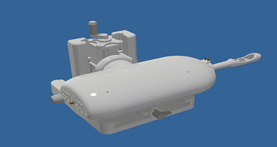PROSTASONIC
Prostate cancer ablation with a 4D robotic system using thermal ultrasonic waves under MRI guidance. ENTERPRISES/0918/0012
PARTNERS
MEDSONIC LTD
Cyprus University of Technology (CUT)
Ygia Polyclinic
Duration
2019-2021

SUMMARY
PROSTASONIC addresses the major social challenge of treatment of prostate cancer using magnetic resonance guided focused ultrasound (MRgFUS). The goal is to produce an advanced prototype robotic system with 4 degrees of freedom (DOF) that can ablate prostate tissue using MRgFUS. The intended application is to use this system for focal ablation of prostate cancer. The tissue heating can be accurately monitored using MR thermometry. The proposed single element transducer will be compact (around 20 mm in diameter) and will operate with a frequency close to 3 MHz. A software will be developed that will control this medical device. The system will be evaluated in phantoms, excised tissue and animals. With the proposed disrupting technology, we hope to change the culture of prostate cancer therapies. This system can be applied in the future for other prostate applications (for example Benign prostate hyperplasia).

